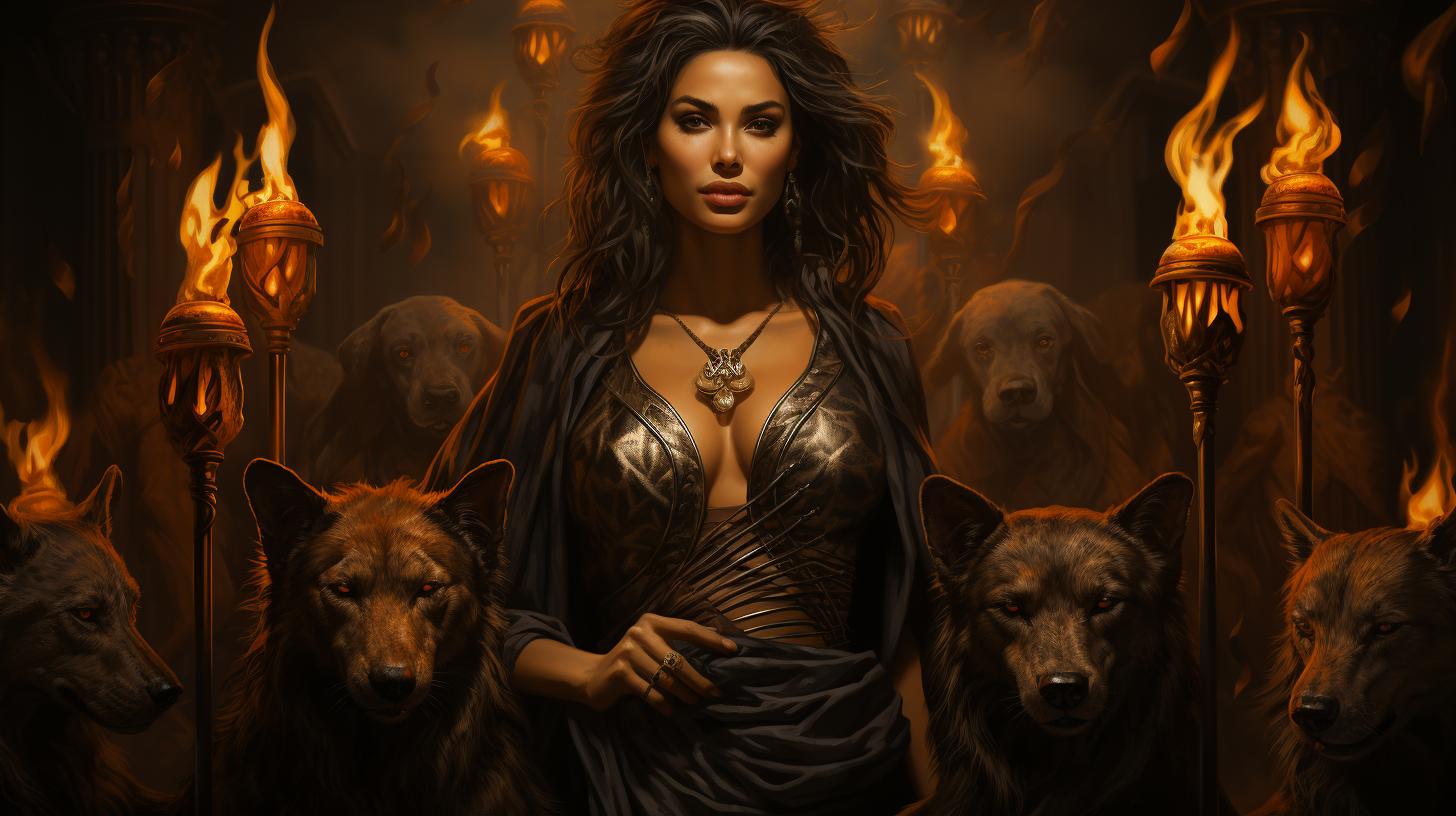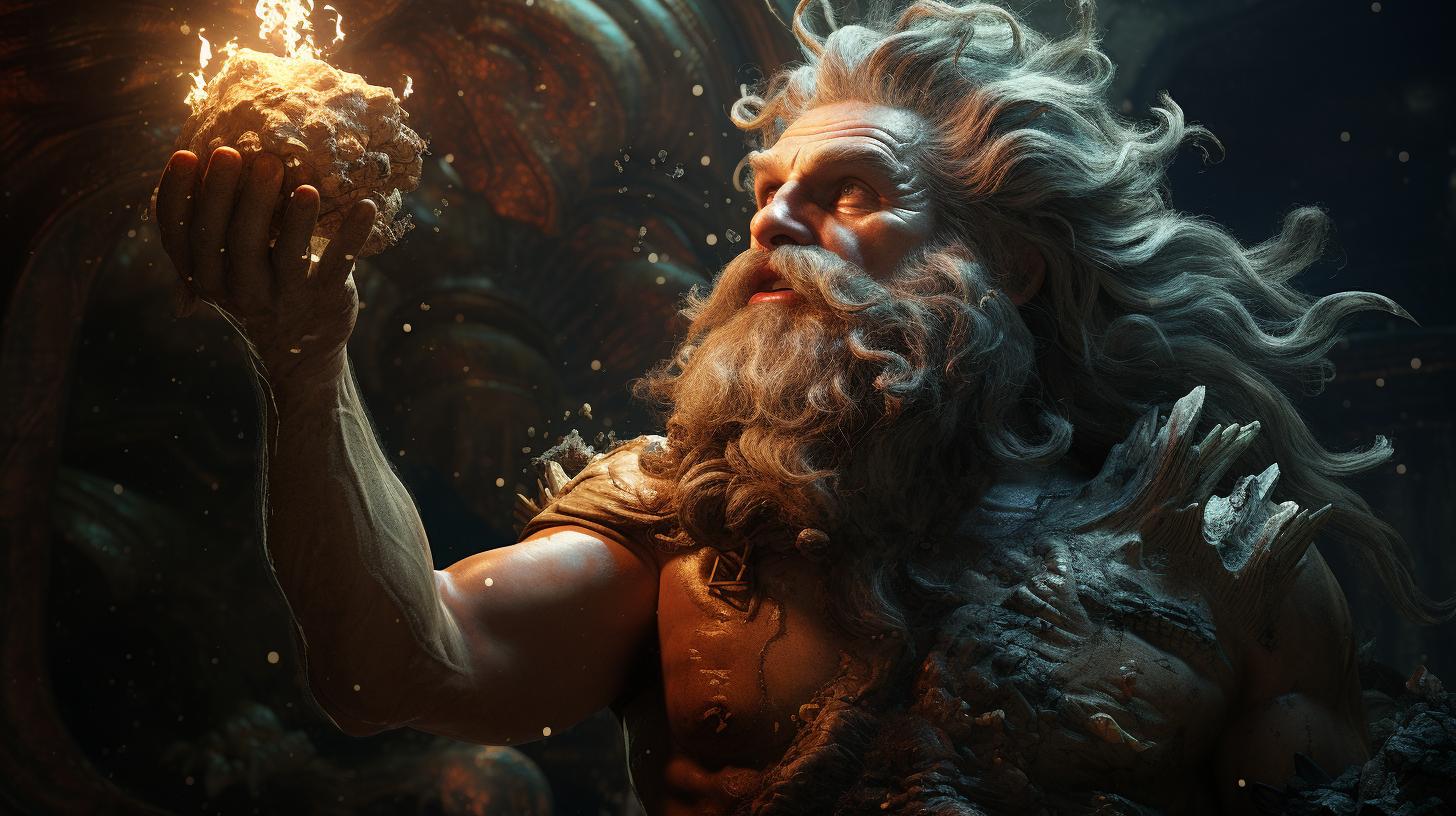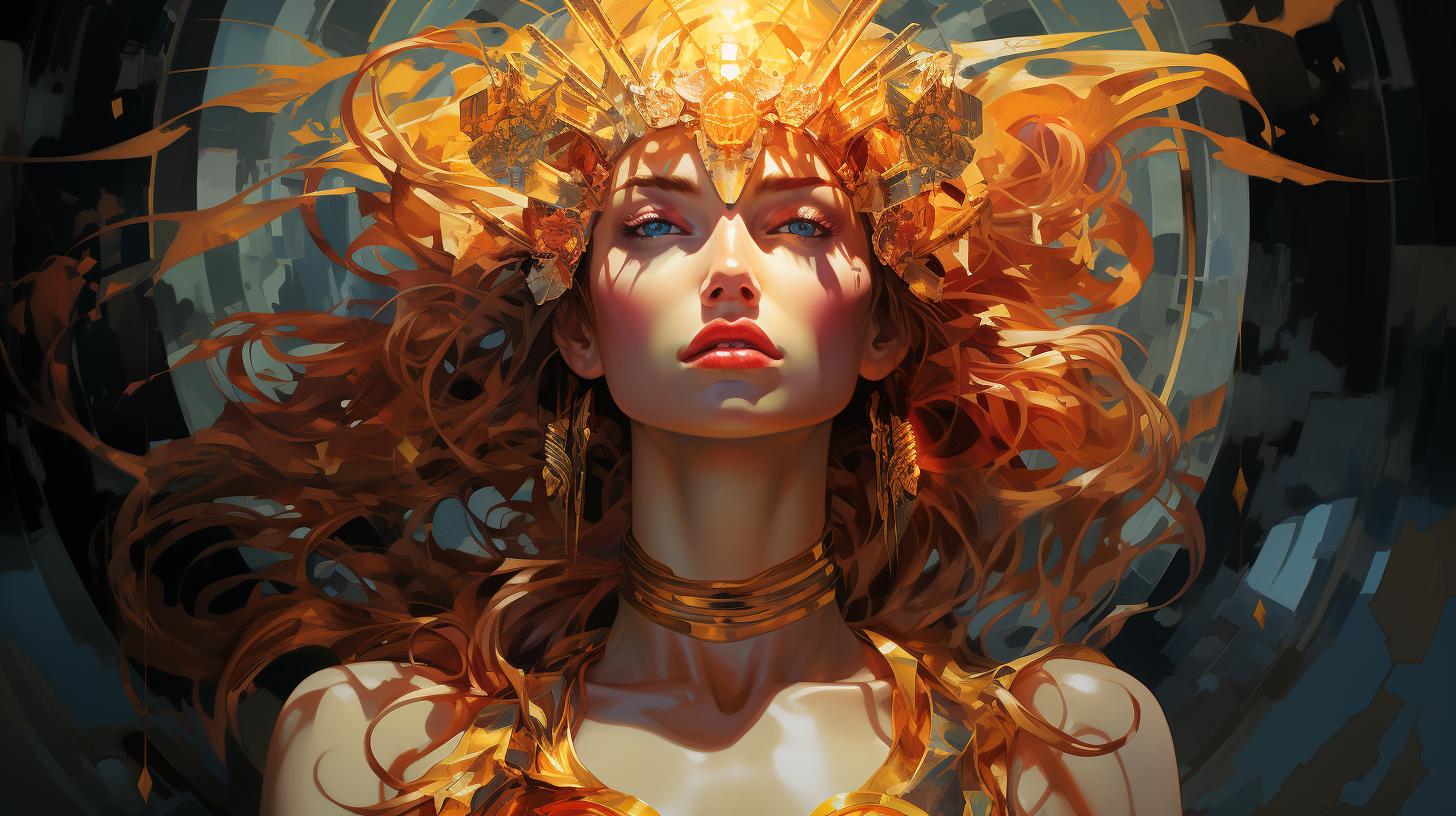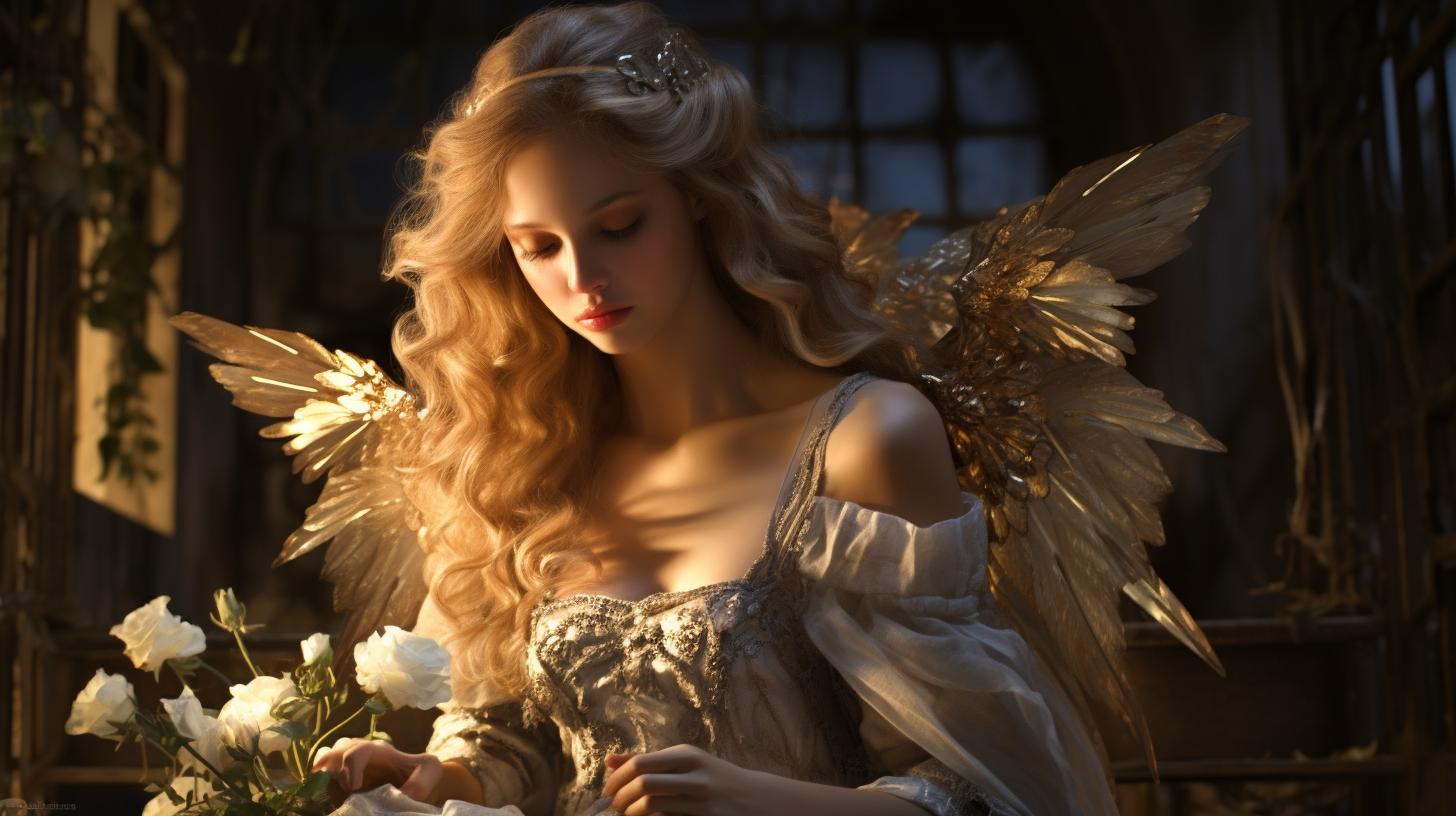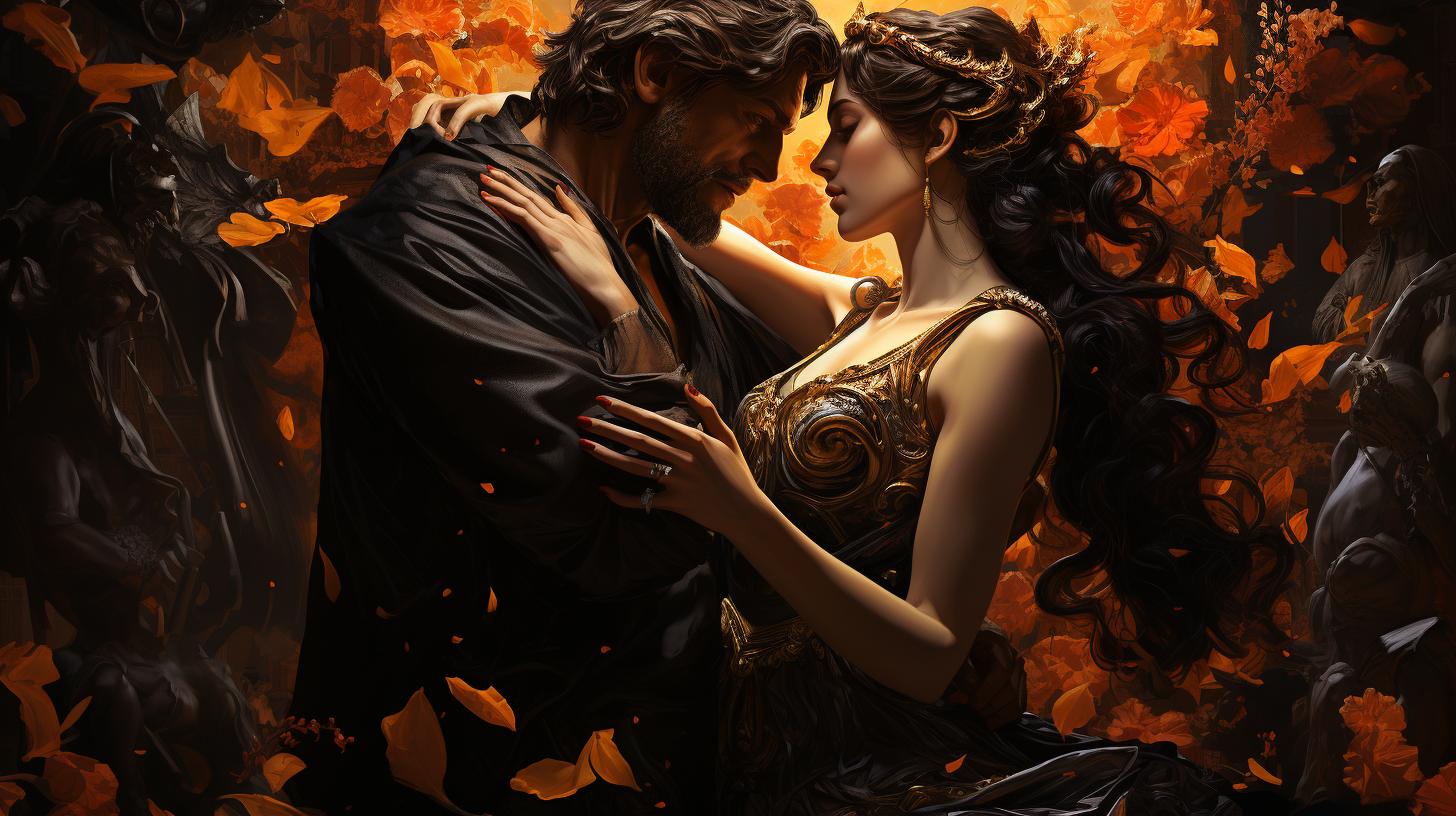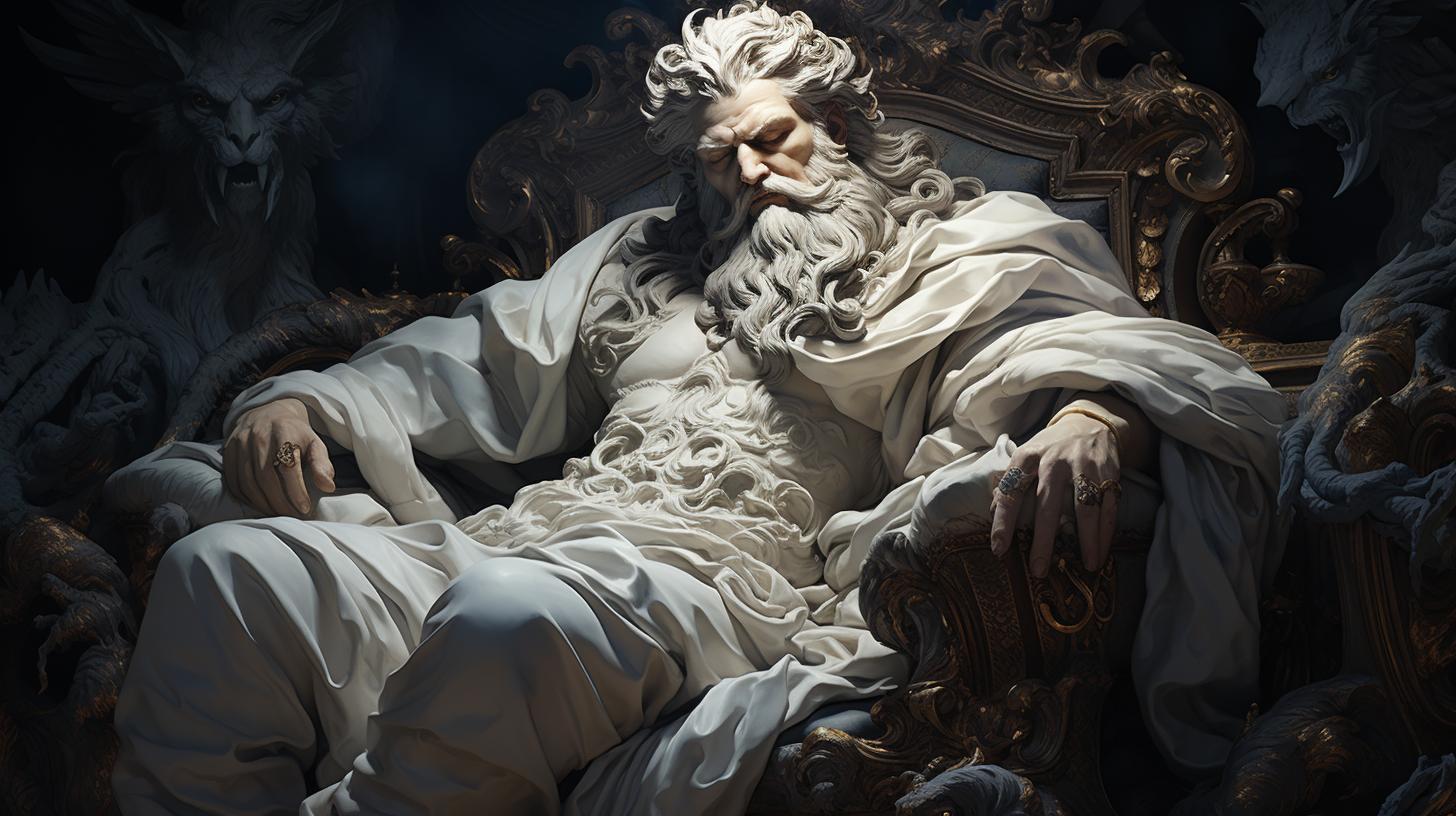What is Hecate the Goddess of?: Unveiling the Mysteries of the Triple Goddess
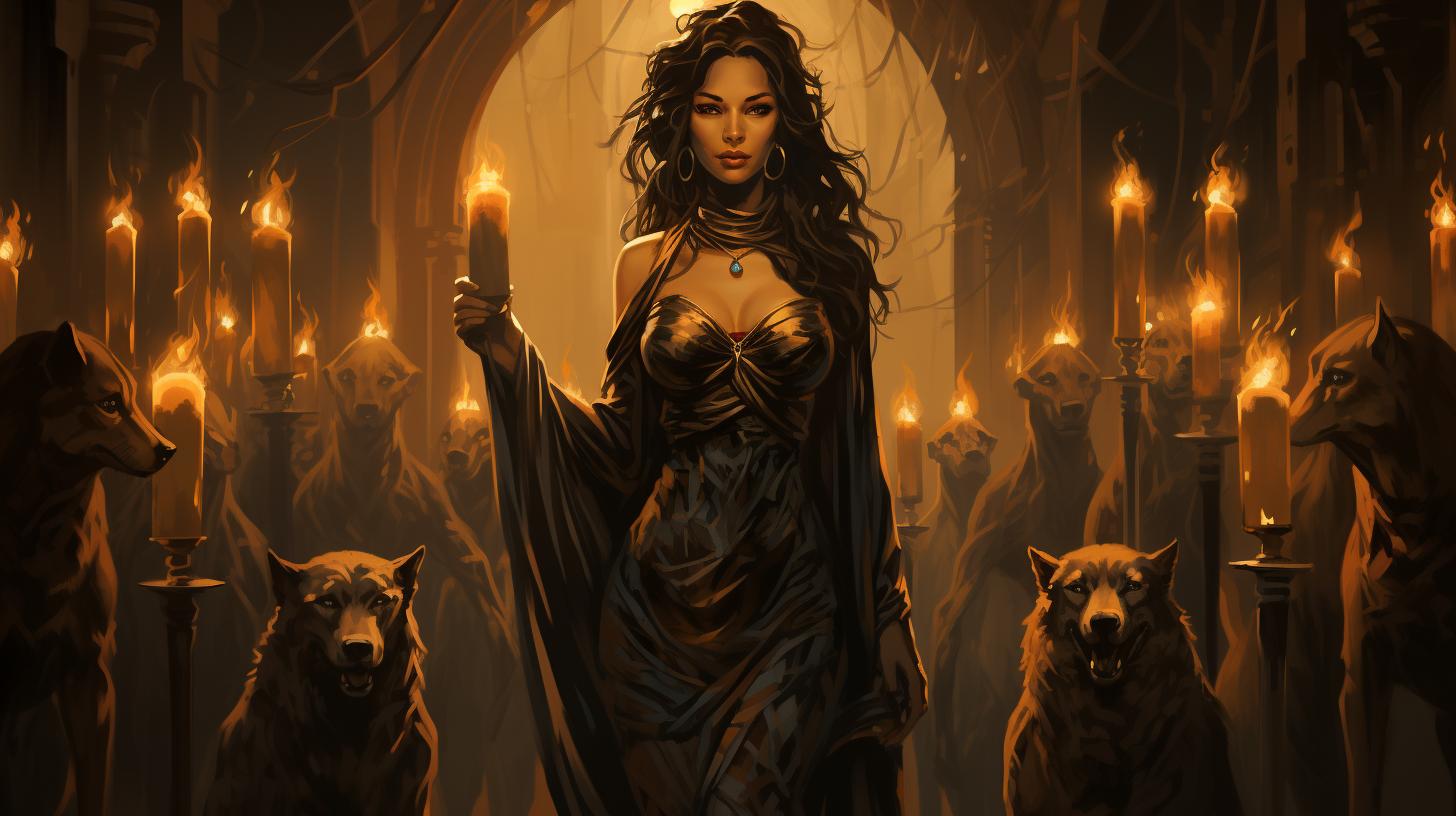
Hecate, the Triple Goddess revered in various neopagan religious and spiritual traditions, holds significance as a deity embodying three distinct aspects: the maiden, the mother, and the crone. The concept is associated with different stages of the female lifecycle and aligned with the phases of the moon.
Hecate’s domains encompass night, light, magic, witchcraft, and protection against witchery. She is linked to crossroads, entrances, and animals like dogs, snakes, and horses, as well as knowledge of herbs and poisonous plants.
Hecate’s origins trace back to ancient Greece, where she was worshipped as a guardian of the home and a prominent deity alongside Zeus and others, later identified with Artemis and Diana in Roman times.
Hecate’s depictions vary, often shown holding twin torches or as a three-bodied goddess observing all directions from crossroads. Her influence extends to feminism, literature, Jungian psychology, and literary criticism.
Overview of Hecate
Hecate, a revered goddess in various neopagan religious and spiritual traditions, embodies unique aspects that make her a captivating figure.
This section provides an introduction to Hecate as a goddess, delving into the concept of the Triple Goddess and her significant associations with Greek mythology and the moon.
Introduction to Hecate as a Goddess
Hecate holds a prominent position as a goddess in neopagan belief systems, where she is deeply revered. Her mystical nature and multifaceted qualities have captivated the imaginations of many, making her a compelling figure to explore.
As we delve into her story, we uncover the intricate layers that define Hecate’s essence.
The Triple Goddess Concept
One of the striking aspects of Hecate is her embodiment of the Triple Goddess concept. She encompasses the three distinct aspects of the maiden, mother, and crone, symbolizing different stages within the feminine lifecycle.
Each aspect holds its own symbolism and significance, contributing to the diverse nature of Hecate’s character.
Hecate in Greek Mythology
Greek mythology is woven with enchanting tales, and Hecate finds her place among the pantheon of gods and goddesses. The mythological narratives surrounding Hecate depict her power, influence, and the intricate web of connections she holds with other deities.
Exploring her role in Greek mythology sheds light on the depth of her character and the reverence she inspired.
Hecate’s Associations with the Moon
The moon holds a profound association with Hecate, further contributing to her enigmatic persona. The lunar symbolism tied to Hecate reveals her ties to the celestial body’s different phases and their connection to various aspects of life and magic.
By understanding Hecate’s lunar associations, we delve deeper into her mystical realm and the wisdom she imparts.
The Three Aspects of Hecate
Hecate, the Triple Goddess, embodies three distinct aspects representing different stages of the female lifecycle. These aspects are the Maiden, the Mother, and the Crone. Each aspect holds its own symbolism and significance in Hecate’s mythology and worship.
The Maiden Aspect
The Maiden aspect of Hecate represents youth, purity, and the beginnings of life. Symbolized as a young woman, the Maiden embodies innocence, curiosity, and potential. Associated with the waxing moon, she signifies growth, exploration, and new beginnings.
- Symbolism and Importance: The Maiden represents the energy of youth and the endless possibilities that lie ahead.
- Connections to the Moon: As the moon transitions from new to crescent, the Maiden’s energy aligns with the youthful energies of the lunar cycle.
- Hecate’s Role as a Maiden Goddess: Hecate’s Maiden aspect embodies the vigor and optimism of youth, inspiring individuals to embrace new experiences and embark on personal journeys of discovery.
The Mother Aspect
The Mother aspect of Hecate symbolizes fertility, nurturing, and abundance.
Representing the peak of a woman’s reproductive years, the Mother aspect encompasses qualities of protection, compassion, and creation. Aligned with the full moon, she signifies the culmination of growth and the blooming of life.
- Significance of the Mother Aspect: The Mother aspect celebrates the power of creation, both in terms of physical childbirth and nurturing emotional and spiritual growth.
- Motherhood and Female Empowerment: Hecate’s Mother aspect highlights the strength and resilience of mothers, emphasizing the importance of feminine nurturing and empowerment.
- Hecate as a Protectress and Nurturer: In her Mother aspect, Hecate provides guidance, support, and protection to those in need, offering maternal care and unconditional love.
The Crone Aspect
The Crone aspect of Hecate represents wisdom, transformation, and the natural cycle of life and death.
Often depicted as an elderly woman, the Crone embodies experience, intuition, and the deep knowledge gained through a lifetime of learning. Aligned with the waning moon, she signifies release, introspection, and spiritual transformation.
- Understanding the Crone Stage: The Crone aspect acknowledges the inevitability of aging and embraces the wisdom and transformation that come with it.
- Wisdom and Transformation: The Crone embodies the accumulated knowledge, inner strength, and transformative power that emerges from life’s experiences.
- Hecate as the Wise Elder: In her Crone aspect, Hecate offers guidance, insight, and acceptance of mortality, inspiring individuals to embrace the aging process with grace and wisdom.
Hecate’s Domains and Associations
Hecate, the Triple Goddess, holds significant domains and associations that highlight her diverse nature and influence.
Explore her realms of magic, crossroads, witchcraft protection, and knowledge of herbology.
Goddess of Magic and Witchcraft
- Delve into Hecate’s profound connection to magic and her role as a deity of witchcraft.
- Discover the symbolism and significance of Hecate’s association with spellcasting.
- Uncover the ancient practices of witchcraft in Greece and how they relate to Hecate’s worship.
- Explore modern interpretations and perspectives on Hecate’s magical attributes.
Goddess of the Crossroads
- Examine the symbolism and profound significance of Hecate’s association with crossroads.
- Learn about Hecate’s role in guiding choices and journeys, as well as her representation as a guide at intersections.
Protector against Witchcraft
- Discover Hecate’s role as a powerful protectress against harmful witchcraft.
- Explore ancient beliefs and practices surrounding the use of Hecate’s guidance to ward off malevolent magic.
- Understand how Hecate’s relevance extends to modern practitioners seeking protection.
Goddess of Knowledge and Herbology
- Acknowledge Hecate’s wisdom and expertise in the realm of knowledge and herbology.
- Unravel Hecate’s vast knowledge of plants, herbs, and their uses.
- Explore the rich history of herbalism and healing practices within Hecate’s worship.
- Understand Hecate’s continued influence on modern herbal practices and alternative medicine.
Embrace the multifaceted nature of Hecate’s domains and associations, delving into the realms of magic, crossroads, witchcraft protection, and herbology.
Her influence reverberates through time, offering guidance, knowledge, and mystical power to those who seek her presence.
Influence of Hecate in History and Modern Culture
Hecate, the mysterious and revered Triple Goddess, has left an indelible mark on history and continues to captivate modern culture. Her multifaceted influence is far-reaching, encompassing various aspects of ancient Greek society, feminism and women’s empowerment, literature and symbolism, as well as contemporary pagan and Wiccan practices.
Hecate in Ancient Greek Society
In ancient Greek society, Hecate held a prominent place in religious practices. She was worshipped as a guardian deity and had a distinct role in the pantheon alongside Zeus and other gods.
Her cultic rituals and beliefs were deeply ingrained in the daily lives of the Greeks.
Influence on Feminism and Women’s Empowerment
Hecate’s archetype has resonated strongly with feminist movements, symbolizing female strength, agency, and wisdom. The enduring image of the Triple Goddess has become an embodiment of empowerment for many women, celebrating the diverse stages of womanhood and embracing the power within.
Hecate in Literature and Symbolism
Hecate’s presence in literature spans centuries, where she is often depicted as a powerful and enigmatic figure. From Shakespeare’s portrayal in “Macbeth” to modern works of fiction, Hecate’s symbolism represents the dichotomy of light and darkness, magic and mystery, weaving her way into the literary tapestry of various cultures.
Hecate in Contemporary Paganism and Wicca
In the realm of modern spirituality, Hecate’s worship has seen a resurgence among pagan and Wiccan practitioners. She is honored as a goddess of magic, crossroads, protection, and knowledge, embodying the enduring legacy of ancient beliefs merged with contemporary interpretations.
Hecate, with her intricate connections to history and modern culture, continues to be a source of fascination, inspiration, and reverence. Her influence traverses time, leaving an everlasting imprint on the realms of myth, spirituality, and women’s empowerment.
Exploring Connections: Hecate and Related Goddesses
As we delve deeper into the realm of Hecate, it is crucial to explore her connections and relationships with other goddesses. This section focuses on two significant aspects: the similarities between Hecate and Artemis/Diana, along with Hecate’s relations with various Greek goddesses.
Similarities with Artemis and Diana
When examining Hecate’s character, it becomes apparent that she shares certain traits and roles with the Greek goddess Artemis and her Roman counterpart Diana. While each goddess possesses her unique attributes, there are fascinating overlaps worth exploring.
Overlapping Attributes and Roles
Both Hecate and Artemis/Diana are associated with the moon and its phases, emphasizing their connection to the ever-changing cycles of life. Additionally, all three goddesses are revered as protectors of the natural world, including wildlife and sacred spaces.
Hecate and Artemis/Diana are also intrinsically linked to women’s experiences and empowerment. They embody independence, strength, and fierceness, challenging societal expectations and asserting their autonomy.
Differentiations and Regional Variations
Despite their similarities, there are distinct differences in the portrayal of Hecate, Artemis, and Diana across different regions and mythological traditions.
These variations reflect the cultural influences and interpretations associated with each goddess.
While Hecate is primarily depicted as a deity associated with magic, crossroads, and witchcraft, Artemis embodies the hunter and protector of young women.
Diana, on the other hand, is often portrayed as the goddess of the hunt and the moon.
Hecate’s Relations with Other Greek Goddesses
In addition to her connections with Artemis and Diana, Hecate has various relationships with other Greek goddesses, each contributing to her multidimensional nature and significance within Greek mythology.
Mythological Relationships and Interactions
Hecate’s interactions with other Greek goddesses are rich in mythological lore.
For instance, she is often associated with Persephone, the queen of the Underworld, and plays a pivotal role in the story of her abduction by Hades.
Hecate also shares ties with Demeter, the goddess of agriculture, as both entities are linked to the cycle of life, death, and rebirth.
This connection further emphasizes Hecate’s role as a guide through transitions and transformations.
Influence on Other Female Deities
Furthermore, Hecate’s influence extends to various female deities within Greek mythology. She plays a significant role in empowering goddesses like Athena, providing them with guidance, wisdom, and assistance in their endeavors.
Her association with goddesses such as Aphrodite, Hera, and Hestia showcases her involvement in the various aspects of feminine energies and responsibilities, ranging from love and marriage to hearth and home.
Through her connections with these goddesses, Hecate contributes to the interconnectedness and complexity of Greek mythology, solidifying her position as a powerful and influential deity.
- Mythological Relationships and Interactions
- Influence on Other Female Deities
Exploring the relationships and connections between Hecate and other goddesses provides a broader understanding of her significance and role within the Greek pantheon.
These associations reveal the depth and complexity of Hecate’s character, showcasing her influence on various aspects of Greek mythology and the reverence bestowed upon her.
.

